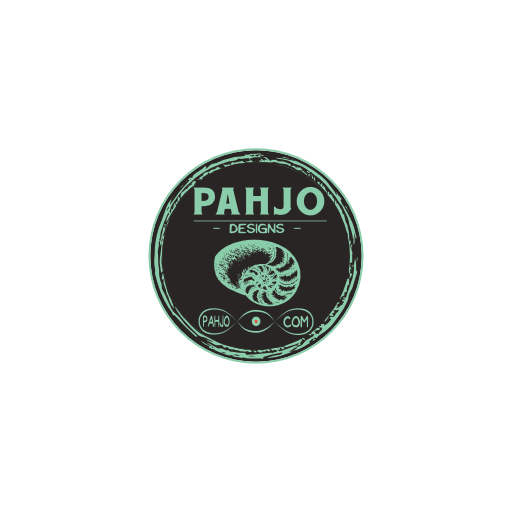In this article, learn how to choose epoxy resin for thick pours, resin river tables, and resin art projects.
Also, I show you the most important factors to consider when choosing an epoxy to achieve the best results possible.
Here are some jump links to the main sections of this post to help you find the information you need quickly.
Costly Mistakes and Lessons Learned
2 Types of Wood and Resin Projects
Choosing the Best Epoxy for Your Project
Deep Pour Epoxy
Table Top Epoxy
Woodworking Epoxy
Resin Art Epoxy
Useful Tools for Epoxy Resin Projects
Epoxy Mistakes and Lessons Learned
After many years, I learned the importance of choosing the best epoxy resin for wood projects.
In the past, I used the wrong epoxy and ruined unique resin wood tables.
Additionally, I wasted money on epoxy resin tools I thought I needed, but never used.
Most importantly, I hope the information in this article prevents you from making costly mistakes like the one below.
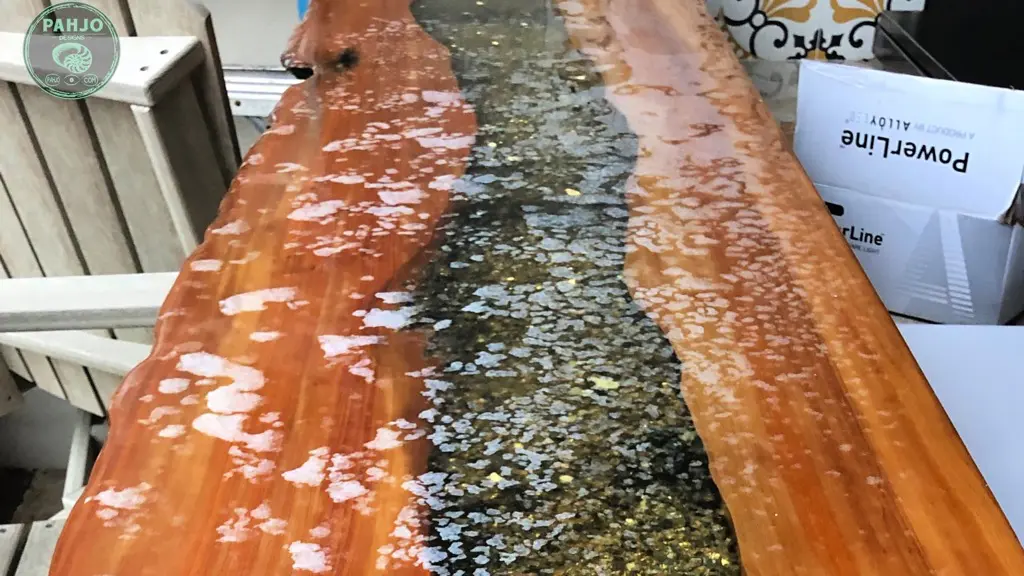
I use each epoxy product in this article on resin projects.
Furthermore, I am not affiliated or sponsored by any of these companies.
The opinions in this article are my own based on my experience.
Type of Wood and Resin Projects
Before choosing the best epoxy resin for your project, classify your project as either an epoxy casting project or an epoxy coating project.
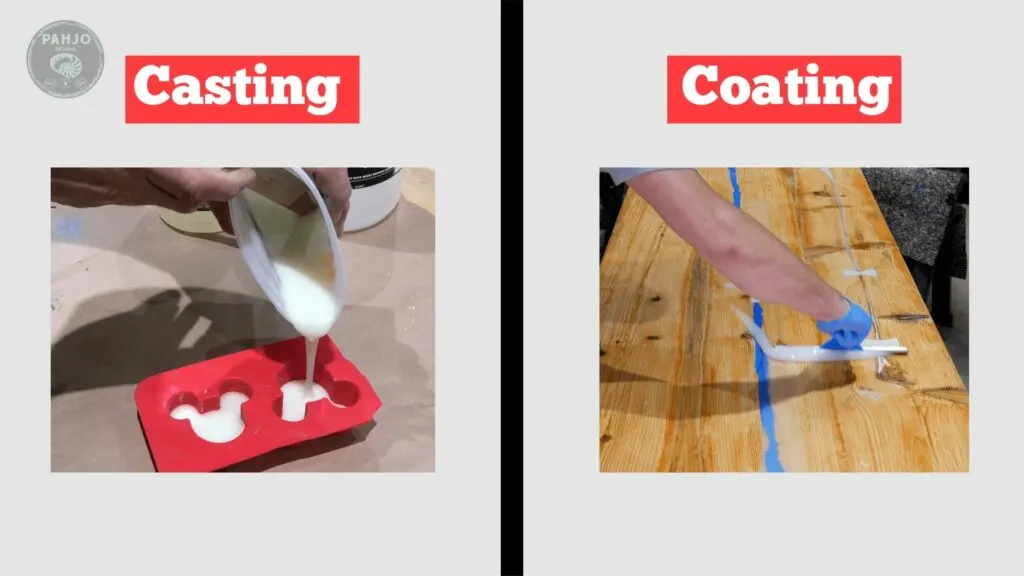
Casting Resin
Casting epoxy are used for clear encasing and suspensions.
For example, you pour the epoxy into a mold to retain the same shape.
For example, use casting resin for deep pours in a resin river table
Coating Resin
Coating resins are used to coat objects to make them stronger, easy to clean, water resistant, and/or rust proof.
A thin layer of epoxy can also preserve objects and glue things together.
For example, use coating resin for a epoxy table top coat or a resin art project.
Selecting the Right Epoxy Resin
I categorize epoxy resin types into 4 types to help me choose the best option.
- Deep Pour Epoxy (2″ or greater)
- Table Top Epoxy (Protective Top Coat)
- Woodworking Epoxy
- Epoxy Resin for Art Projects
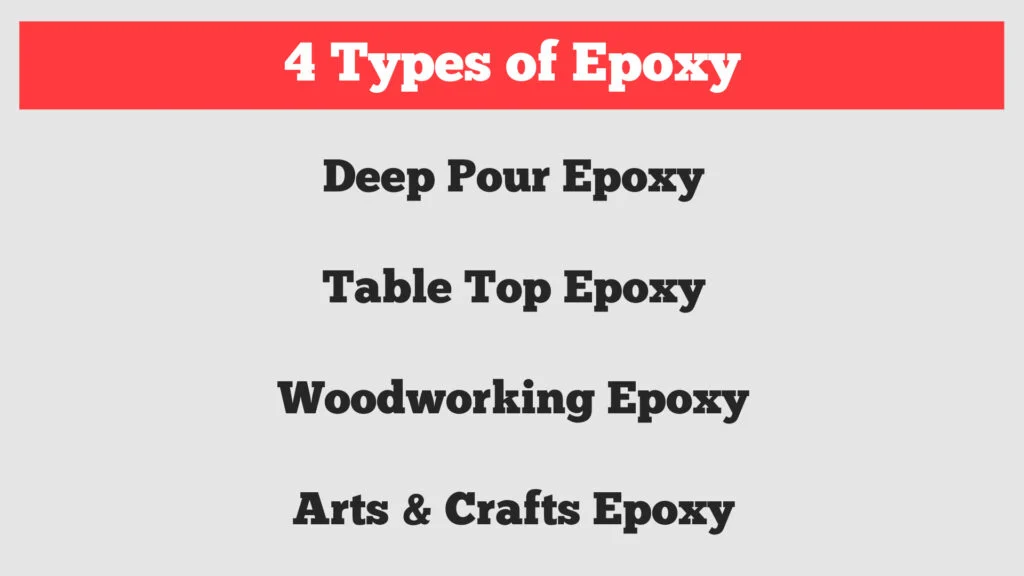
In addition to the project type, you should consider these questions to make sure the epoxy fits within your environment and workflow.
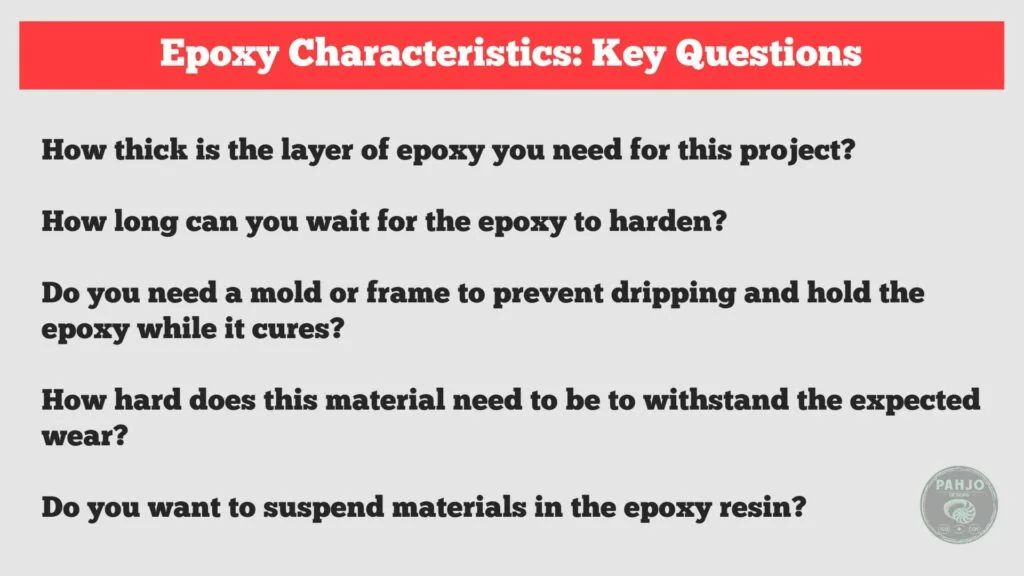
Deep Pour Epoxy Resin
To start, the best epoxy resin for Thick pours such as resin river tables is Liquid Glass Super Clear Deep Pour Epoxy.
Large projects such as a resin river table require deep pour epoxy to get the job done with one pour.
This deep pour epoxy allows resin pours up to 4″ deep and cures to a crystal clear finish with no air bubbles.
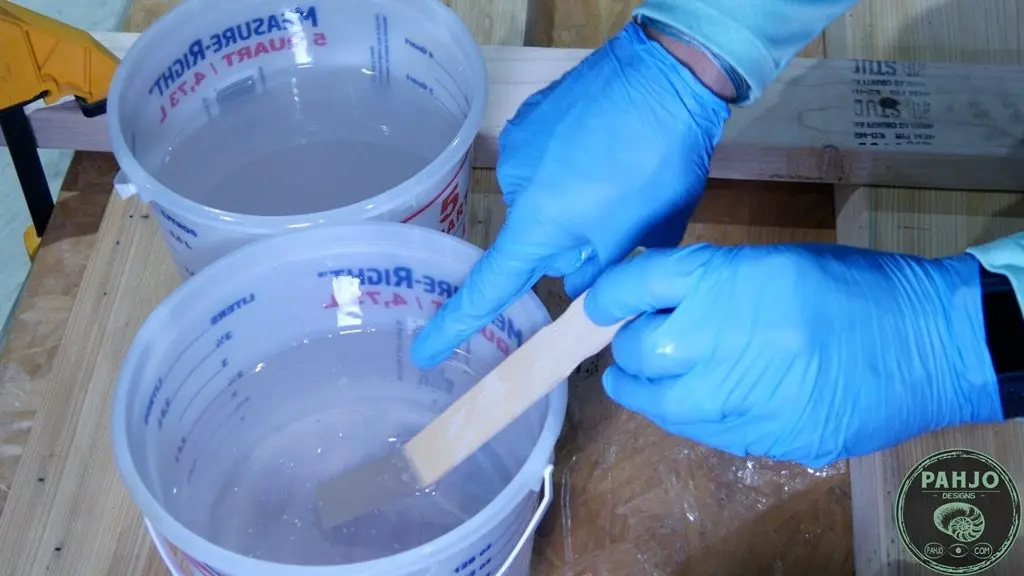
Tabletop Epoxy Resin
Often times, I refer to epoxy for table tops as a protective top coat.
For example, the type of protective coating I used on my epoxy bar top and reclaimed wood farmhouse table.
My favorite epoxy resin for table tops and epoxy countertops is Stonecoat Countertop Epoxy.
More importantly, it is very durable and scratch resistant, which is perfect for wood table top coats and countertops.
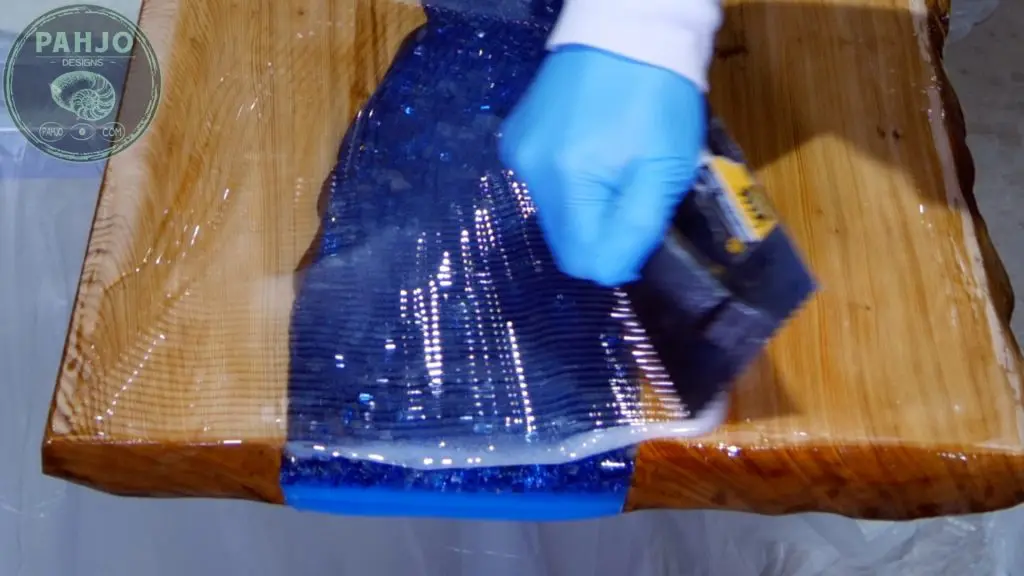
Epoxy Resin for Woodworking
First, my favorite epoxy for woodworking is TotalBoat Epoxy.
Obviously, woodworking tends to be a loose term as it covers a wide range of disciplines.
To clarify, I am referring to resin inlays in wood and using resin to repair wood cracks, wood checks, and wood knots.
Additionally, TotalBoat sells a great product to seal wood surfaces called Penetrating Epoxy.
Penetrating Epoxy seals the surface to get it ready for an outdoor protective varnish or table top epoxy.
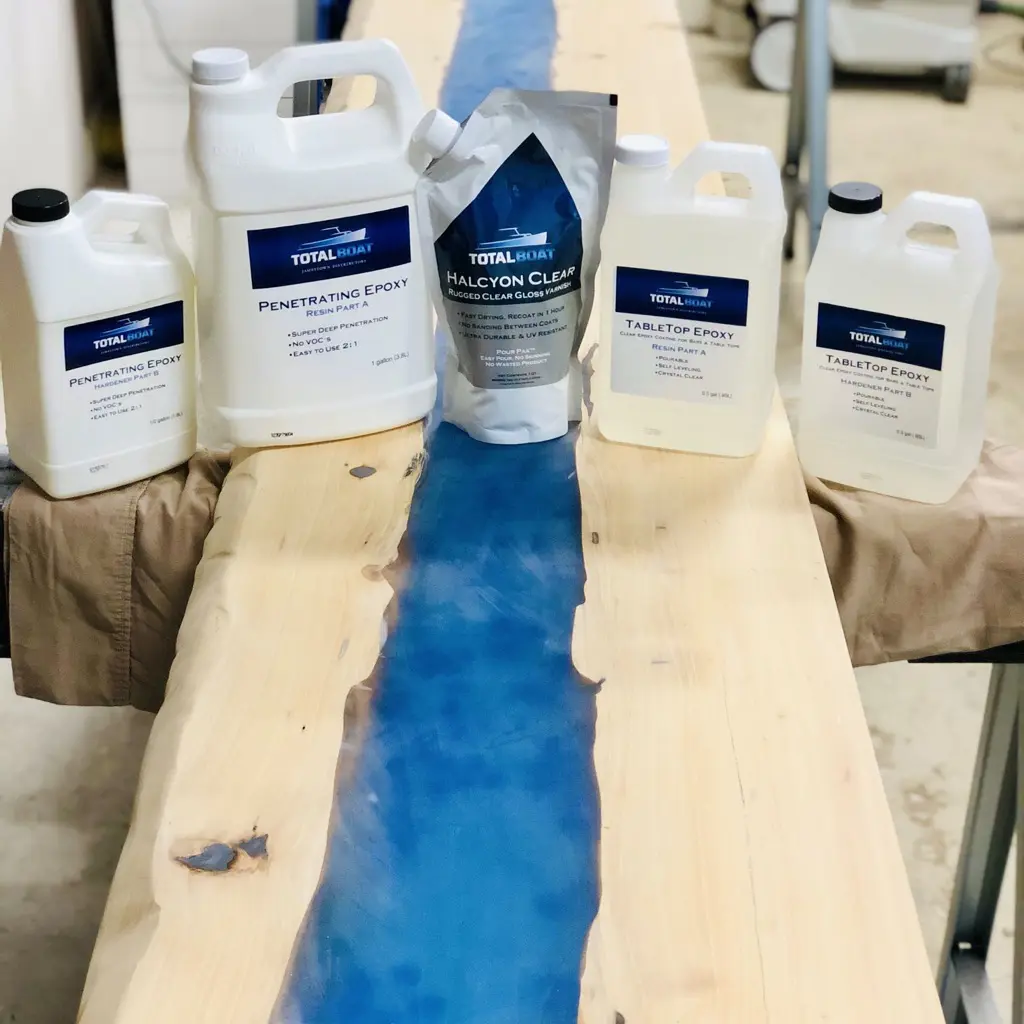
Epoxy for Resin Art Projects
In my experience, the best epoxy for resin art is Liquid Glass Designer Art Resin.
Essentially, this resin was specifically formulated for resin art projects of all types.
Resin art epoxy is best for pouring on a flat surface such as resin canvas art.
Also, I used this on my wood and resin ocean wave art tutorial and it performed really well.
Also, the epoxy I use for art projects varies greatly.
Resin art tends to be forgiving so all types of epoxy work well.
Keep in mind, this resin can only be poured at 1/8″ thick layers, which doesn’t make it a good fit for river tables.
If used for a river table, this epoxy will need to be poured in multiple layers.
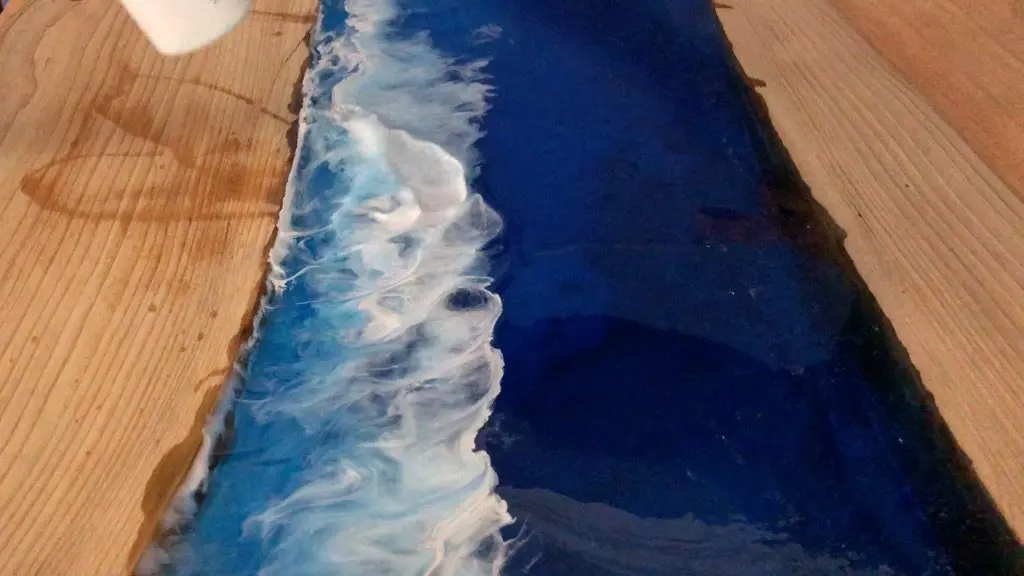
Tools Needed for Epoxy Projects
As mentioned, using the correct epoxy tools and disposables can ‘make or break’ your project.
Additionally, they make an resin project easy or much more difficult.
What are the tools needed for Epoxy Projects?
- Micro Torch
- Heat Gun
- Tape Dispenser
- Vaseline
- Tuck Tape
- Wiper Squeegee
- 1/8″ Notch Trowel
- Helix Paint Mixer
- Chop Brush
- Mixing Sticks
- Plastic Mixing Buckets
How to clean epoxy tools?
Isopropyl alcohol removes epoxy from tools.
Keep in mind, this only works before the epoxy cures.
What can be used to color epoxy?
What is the best glow in the dark powder for resin?
Art ‘N Glow is my favorite epoxy glow powder to use.
In addition, they have many colors to choose from and sample kits available.
Protection Gear for Epoxy Resin Projects
Why does epoxy resin turn yellow?
The most common reason for resin to turn yellow is UV light exposure.
The UV rays damage the polymers within the epoxy, which causes it to turn yellow.
Is epoxy resin self leveling?
Epoxy is self leveling, which makes it ideal to use for woodworking, table top coats, and resin art.
Does epoxy resin bond to wood?
Yes, epoxy bonds to wood and works well to fill voids in wood such as cracks, knots, and checks.
Can I pour multiple layers of epoxy?
Pouring multiple layers of epoxy is possible.
To ensure proper adhesion, sand the bottom layer with a high grit sandpaper.
Conclusion
In conclusion, I hope these epoxy resin tips showed you how to choose best epoxy resin for your DIY project.
And, please leave a comment if you have any questions or just want to say hello – I’m happy to help.
Related Posts:
